Vote for the GNPS 2023 Plant of the Year!
*If the link to the voting page above doesn’t work for you, try copying this in your browser: https://gnps.app.neoncrm.com/survey.jsp?surveyId=23&. You will have to log in as a member, and after doing so, it may be easiest just to click on the link again (or copy into your browser again).
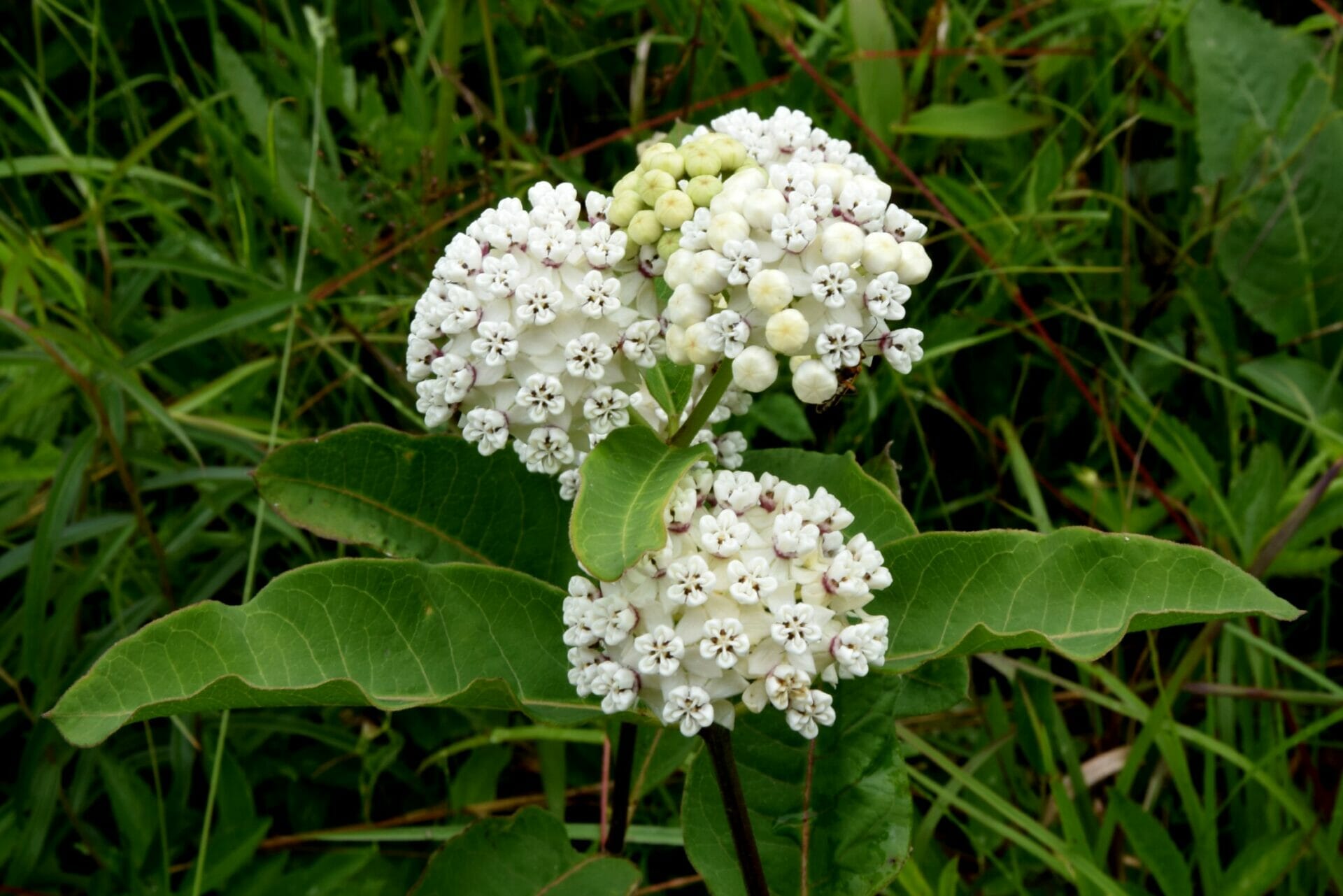
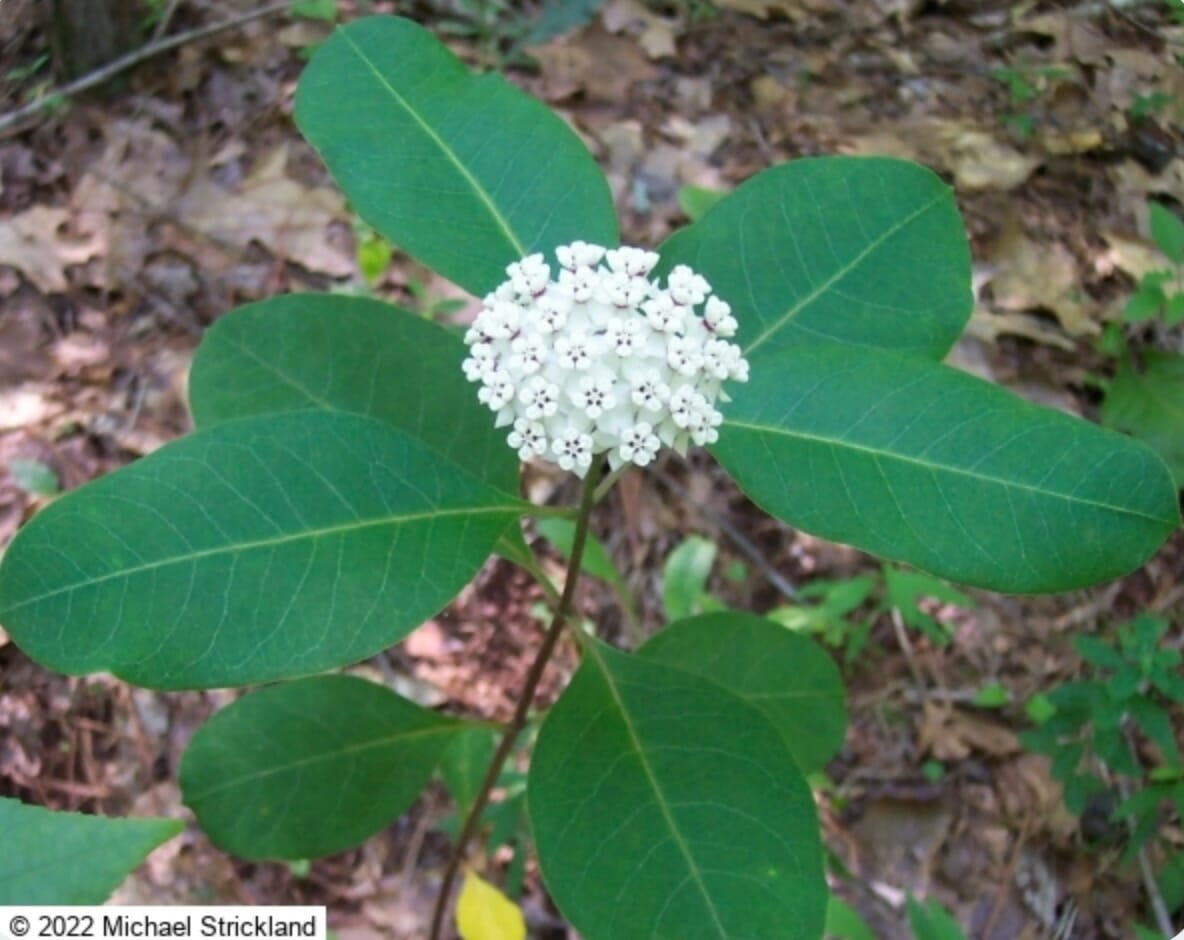
Asclepias variegata
Common name: White milkweed; redring milkweed
Family: Apocynaceae
Plant type: Perennial
White milkweed (Asclepias variegata) grows in scattered counties throughout Georgia (except the southeast region), and is widely distributed across the central and eastern US. An excellent pollinator plant and host to the monarch butterfly, the species has striking flowers; yet, it is relatively unknown as a garden species. Plants grow to be 2-3’ tall and 1-1.5’ wide. Leaves are opposite and oblong, and have smooth margins. They are dark green and smooth on top; pale and hairy underneath. Stems are upright, unbranched, and green or purple-ish green. When white milkweed is in bloom (May-July), the stems terminate in up to 4 umbels, each about 2-3” around, comprised of tight clusters of 15-35 individual flowers. Each 5/8” flower features 5 white petals that flex slightly downward, a corona of 5 erect white hoods with purple rings around the bases, and a central joint where the reproductive organs are situated. Viewed from above, an umbel resembles a white ball, covered in protruding white flowers with dark purple centers. In autumn, the umbels are replaced by long, pointed seedpods, containing flat seeds with silk “parachutes”. Like other milkweeds, white milkweed produces a milky sap in its leaves and stems that can be irritating to the skin and is toxic to some animals. Deer generally avoid it. White milkweed’s natural habitats are slopes, ridges, roadsides, or woodland edges, and it likes dry, rocky, sandy, or clay soil. Unlike other members of the genus, it prefers partial shade, and can be planted in areas that don’t get full sun.
Credits: Text by Valerie Boss. Photos by Ellen Honeycutt (left, flower cluster) and Mike Strickland (right, flower and foliage).

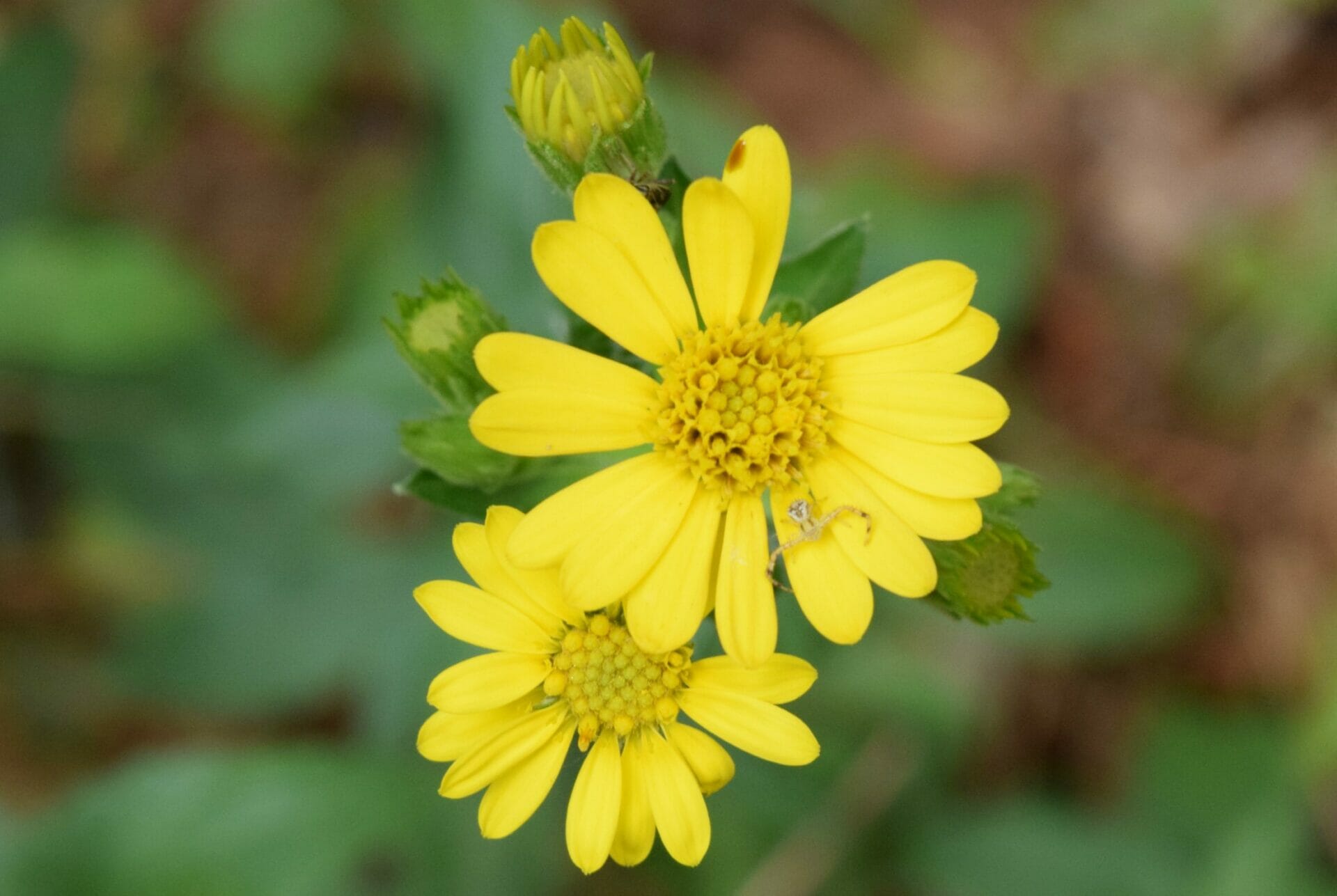
Chrysopsis mariana
Common name: Maryland golden-aster
Family: Asteraceae
Plant type: Perennial
Maryland golden-aster (Chrysopsis mariana) is short-lived, daisy-like perennial. For most of the growing season, it appears as a rosette of elliptical, petiolate leaves, each 2-6” long and up to 1 3/8” wide. When in bloom, a flower stalk, having alternate, untoothed leaves arises 1-2.5’ tall from the center of the basal rosette, topped by a cluster of flower heads. Stems and leaves are covered with long, silky hairs; hence the species’ second common name, “silk grass”. Each individual flower head (about 1” across) is a composite, comprised of a button-shaped center of 21-50 tiny disk flowers, encircled by 13-21 radiating, tongue-shaped ray flowers, with a whorl of pointed bracts covered with sticky glands and/or silky hairs around the base. The disk flowers are dull, dark yellow, the ray flowers are a sunny, bright golden shade, and the bracts are green. Maryland golden-asters typically bloom from August through mid-fall. Fruits are reddish-brown achenes, and the seeds form a pappus, similar to a dandelion puff, except pale golden in color. The genus name comes from the Greek “chryos” meaning gold and “opsis” meaning appearance; hence it “looks like gold”. Although individual specimens may only live a few years, plants re-seed readily, or spread from rhizomes, naturalizing under optimum conditions. Maryland golden-aster grows in woodlands, dry forests, meadows, roadsides, and sunny areas of soil disturbance. In the garden, plant it in a sunny area, with good drainage, medium moisture and preferably sandy soil. Once established, it has some drought tolerance. It attracts butterflies and bees and is well-suited for pollinator gardens, meadows, and border plantings.
Credits: Text by Valerie Boss. Photos by Ellen Honeycutt.
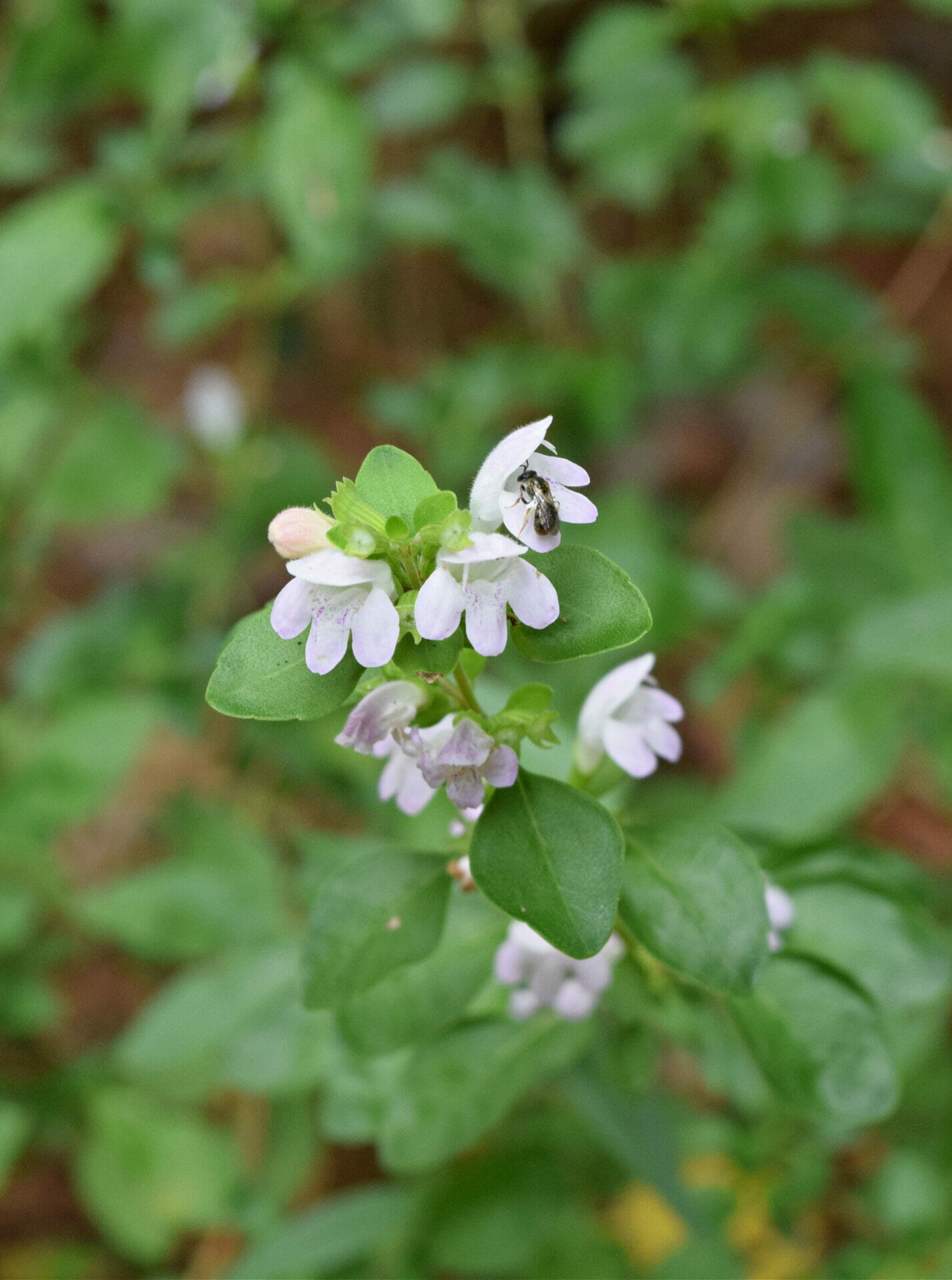

Clinopodium georgianum
Common name: Georgia basil
Family: Lamiaceae
Plant type: Shrub
Georgia basil, aka Georgia calamint or Georgia savory (Clinopodium georgianum) is a small, loosely-branched, semi-evergreen shrub that grows up to 2’ high and 2’ wide. The 4-sided branches become increasingly woody with age, with their tan bark shreds near the base. The plant’s leaves are simple, opposite, 1.5” long x .75” wide, oval or round-ish and toothed. Fascicles of smaller leaves grow from the main leaf axils. When bruised, the leaves smell like mint, and their aromatic oils repel deer. On immature plants, the underside of the leaves can have a purple tinge. From August-October, Georgia basil is festooned with panicles of pale pink or lavender flowers that extend from the leaf axils. The flowers are typically about ½” long and tubular, having a notched upper lip, and a tri-lobed lower lip, dusted with purple specks. Hummingbirds, bees and butterflies love the flowers of this excellent pollinator species. Georgia basil is native to the southeastern US, but is rare in Florida and critically endangered in N. Carolina. In Georgia, it grows mainly in the Piedmont and Coastal Plain, in rocky areas, dry woodlands, and sandhills. Commercially available at many native plant nurseries, it makes an ideal plant for rock gardens or containers. It is also suitable for low parterre hedges, since it responds positively to pruning and can be cut back by half. It is drought-tolerant, and thrives on poor, dry, well-drained, alkaline soils, and full or partial sun.
Credits: Text by Valerie Boss. Photos by Ellen Honeycutt.
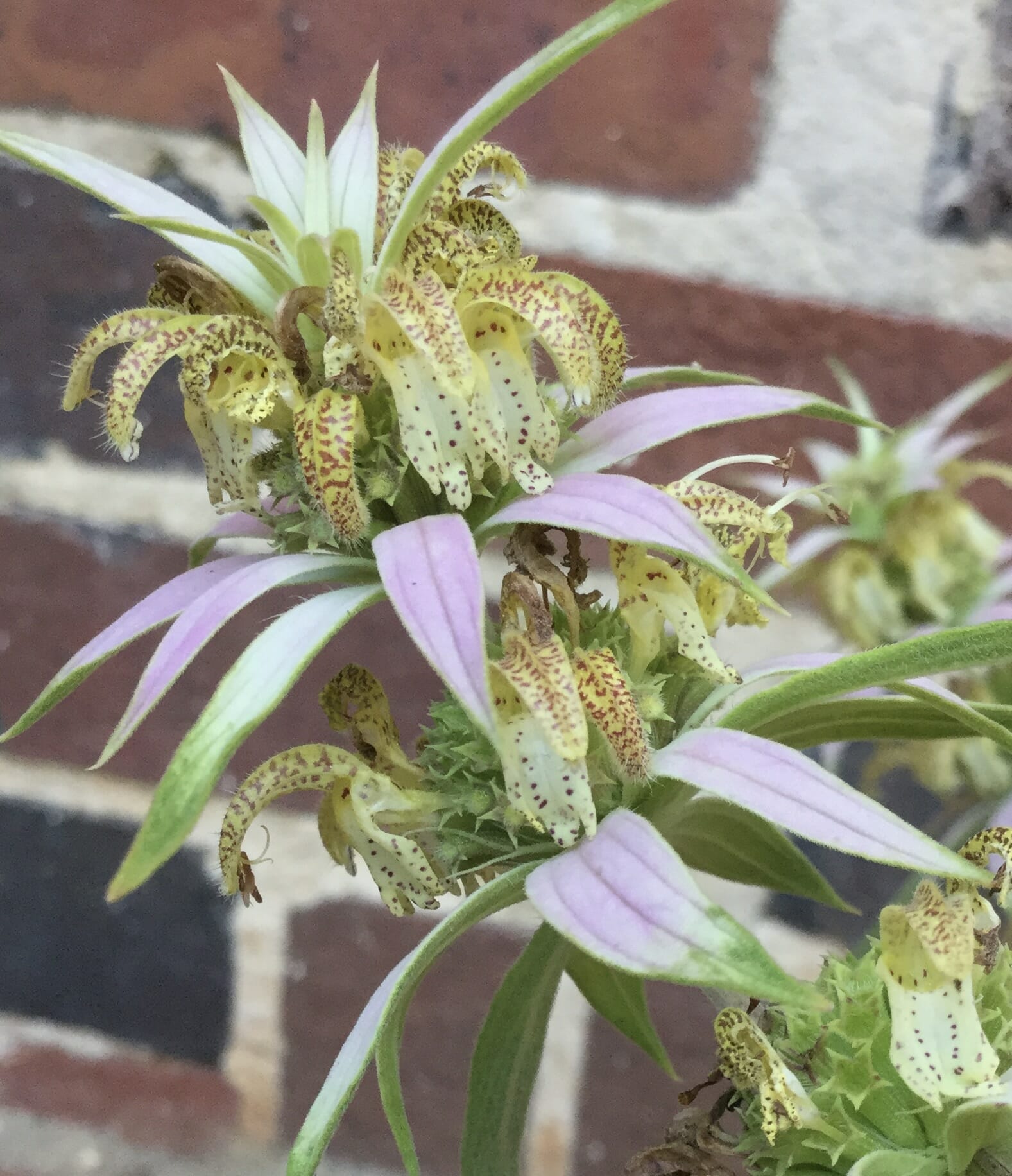

Monarda punctata
Common name: Spotted beebalm; spotted horsemint
Family: Lamiaceae
Plant type: Perennial
Spotted beebalm (Monarda punctata) is hardy and well-suited for sunny gardens, with striking flowers that insects love. Its stems (2-3’ tall) are square, either simple or branched, and covered with soft hairs. Opposite leaves grow to about 3” long, and are lanceolate, toothed, and hairy. They are also highly aromatic, containing thymol, a compound also found in oregano. Spotted beebalm is a source of pollen and nectar for numerous bees, as well as wasps, sphinx moths and various butterflies. In summer, its showy flower heads are confections of whorled bracts and domes of under-curling, purplish-dotted yellow petals. The inflorescence pattern of the species is unusual: flower heads, each about 1” around, are stacked—one at tip of the stem, and those below it encircling the stem. Bracts beneath the petal domes are pinkish-purple, and a bright green whorl of bracts crowns the terminal flower head. Spotted beebalm’s natural habitat consists of dry, sandy soils in woodland margins and coastal plains. It spreads readily from seed. Like many members of the mint family, spotted beebalm is medicinal. The leaves may be used in teas to treat fever, aches and inflammation, and the essential oil has antibacterial properties.
Credits: Text by Valerie Boss. Photos by Ellen Honeycutt (right, bee feeding on beebalm) and Valerie Boss (left, flower close up).

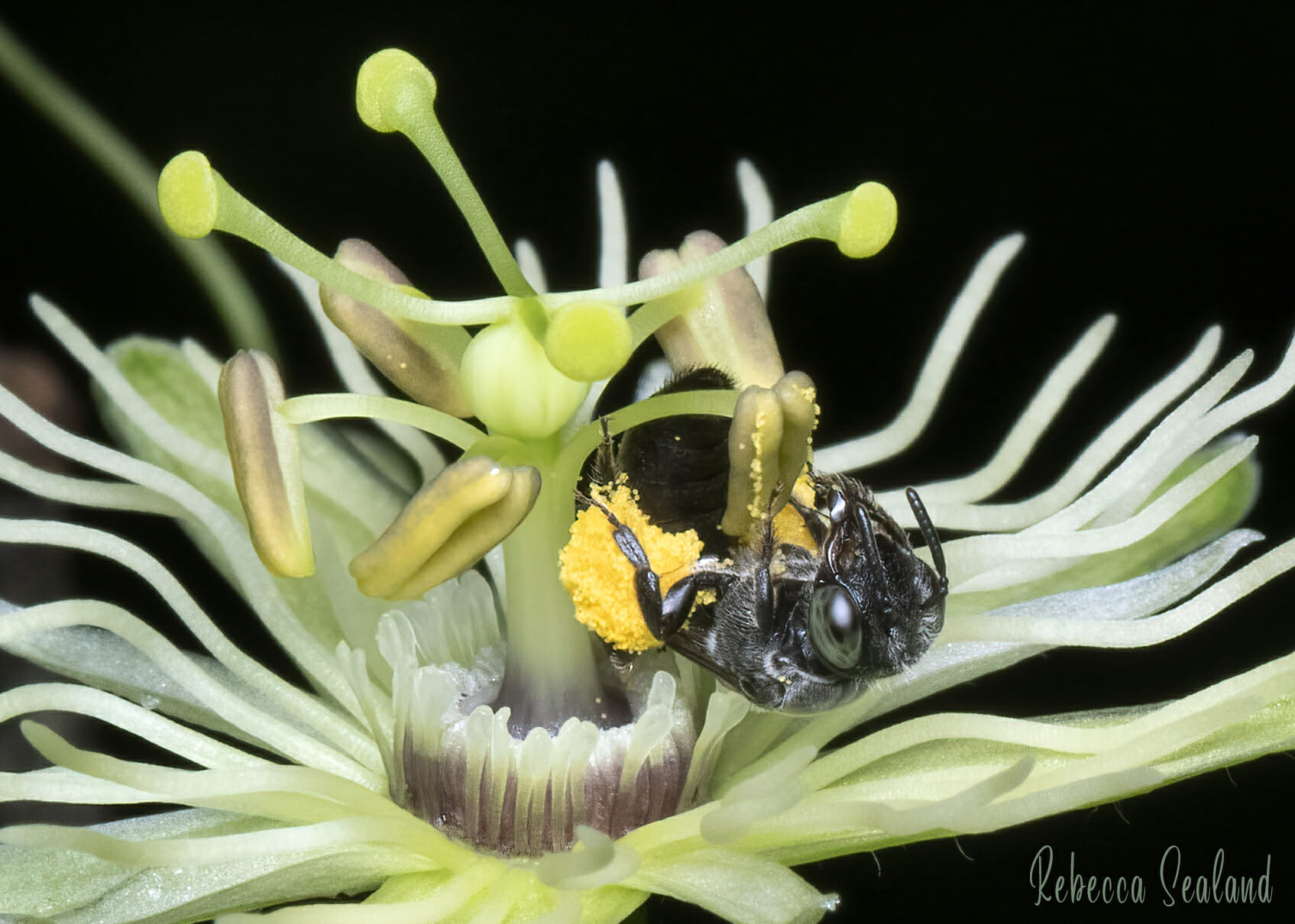
Passiflora lutea
Common name: Yellow passionflower
Family: Passifloraceae
Plant type: Perennial
Yellow passionflower (Passiflora lutea) is a climbing vine with palmate leaves and small, showy, flowers. Its delicate, non-woody stems creep harmlessly overtop of trees and shrubs. It can sometimes climb up to 20’, grasping branches and leaves with coiled tendrils that extend from the petioles. Its leaves vaguely resemble 3-fingered paws. Much wider than long (up to 4” across), they are smooth edged, bright green (sometimes with silver-grey variegations), and have 3 shallow lobes. Flowering from June through September, yellow passionflower is a prolific bloomer. This appears to be necessary adaptation, since individual flowers are open for only one day. Each saucer-shaped flower is roughly 1” across, and has 5 greenish yellow sepals, 5 greenish-yellow petals, as well as a corona of long radiating yellow filaments and short upright filaments that are purple-ish at the base. At the center of the corona is a stalk supporting 3 long green styles and 5 pale yellow stamens. Their pollen is feasted upon by numerous insects, particularly bees. Importantly, yellow passionflower is the only known host for the Passionflower bee (Anthemurgus passiflorae). It is also a larval host plant for at least 3 butterfly species. In autumn, even as new flowers are still opening, ovoid green berries (less than1” long) emerge. These turn purple-black when ripe, and are a food source for small mammals. Yellow passionflower thrives in well-drained soils in full sun to partial shade. Its native habitats are woodlands, thickets and maritime forests. It is an excellent plant for trellis and fence plantings, and will spread once established, unless the berries are removed.
Credits: Text by Valerie Boss. Photos by Valerie Boss (left, flowers and unripe fruits) and Rebecca Sealand (Passionflower bee with pollen).
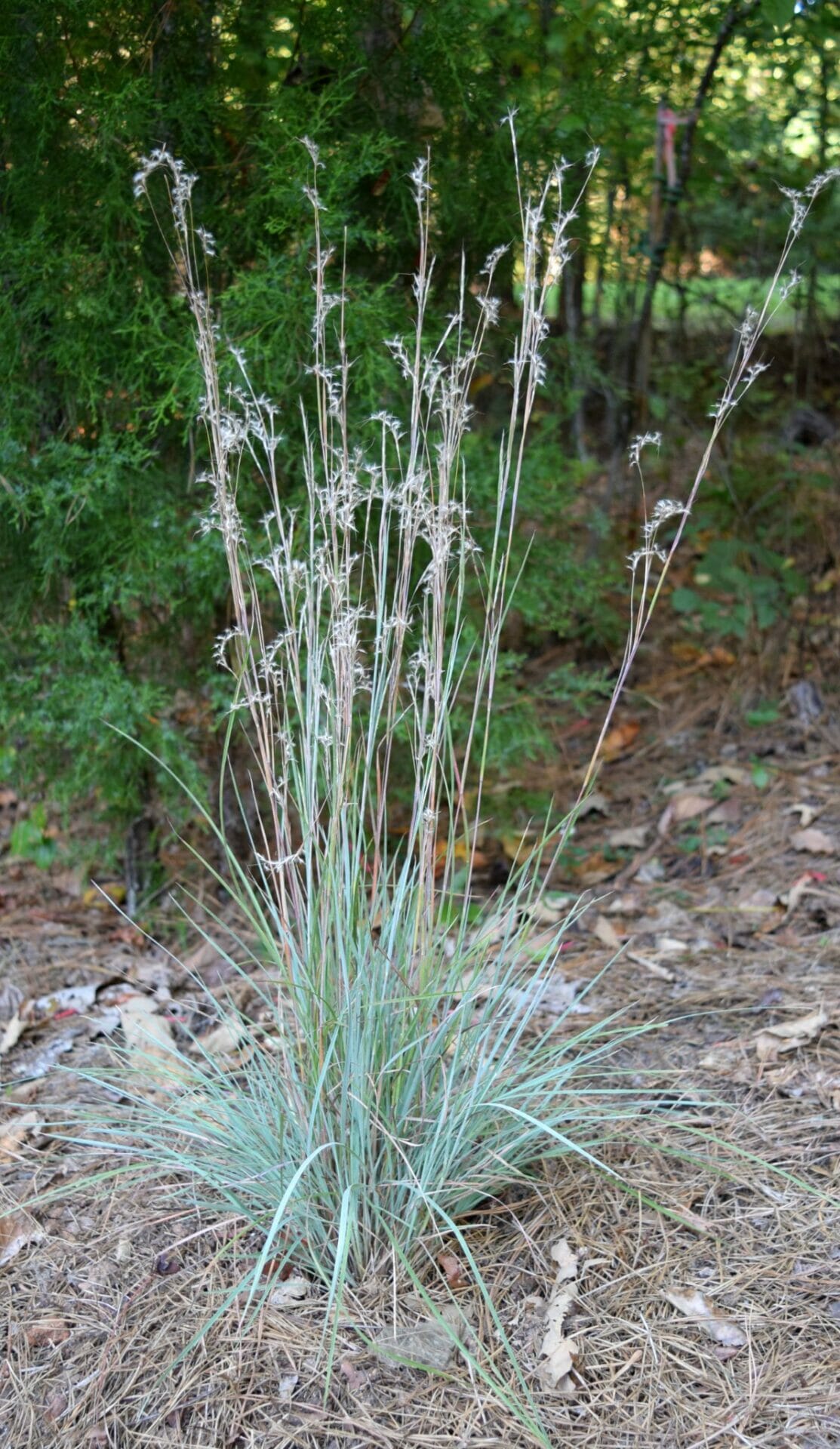
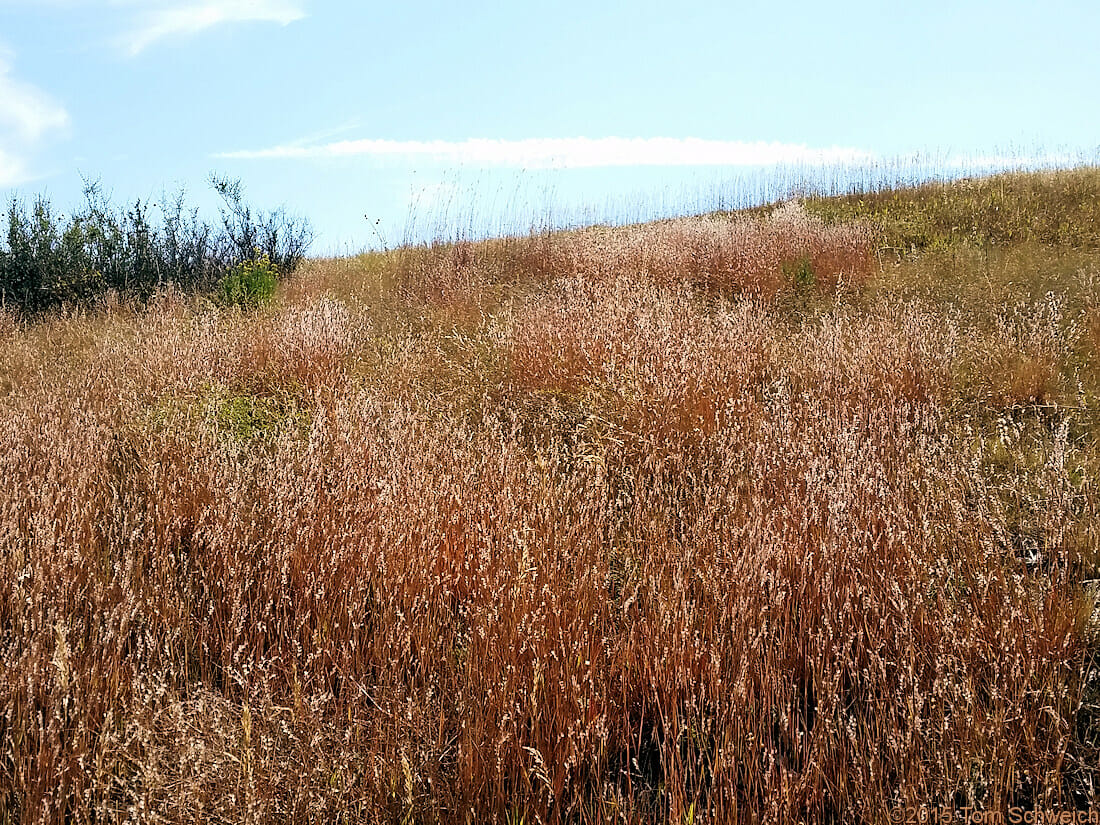
Schizachyrium scoparium
Common name: Little bluestem
Family: Poaceae
Plant type: Grass
Little bluestem (Schizachyrium scoparium; formerly Andropogon scoparius) is a warm-season perennial bunchgrass with attractive foliage. Blue-green in spring and summer, the foliage progresses to a warm blend of golden browns and purplish reds in autumn. The species is widespread across North America and exhibits many ecotypes, depending on growth conditions. Plants generally grow 1-3’ tall, but can reach twice that height, and tend to form dense clumps, 4-10” across. Slender, flat leaves typically range from 8-14” in maximum length. Culms (stems) are erect and solid, branching freely on the upper half. In summer, an arching seedhead, a raceme 1-3” long, appears at the terminus of each branch. The seedheads look white and fuzzy in the sunlight. Each bears many distinct spikelets–some on pedicles (fertile) and others sessile (non-fertile). Fertile spikelets provide food and shelter for many insects. Little bluestem produces copious seeds, and has deep, fibrous roots, making it a good choice for erosion control. It tends to be a second succession plant, meaning that it does not immediately colonize bare, disturbed soil, but comes up after pioneering species are in place. Little bluestem has become rare in much of Georgia, mainly because of the loss of grassland habitat. Fortunately, the species is often used in prairie restorations, and is gaining recognition as a garden plant. Its upright foliage contrasts beautifully with wildflowers in large pollinator plant settings. It likes full sun and fairly dry conditions, and can grow in many soil types.
Credits: Text by Valerie Boss. Photos by Ellen Honeycutt (left, flowers on summer foliage) and Connie Gray (right, autumn meadow stand).
